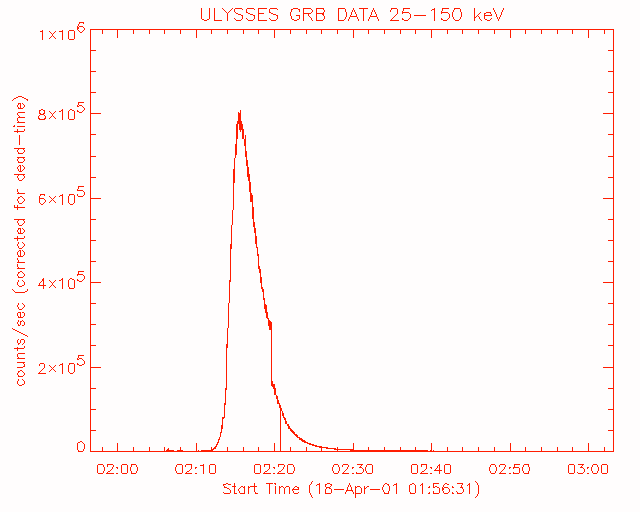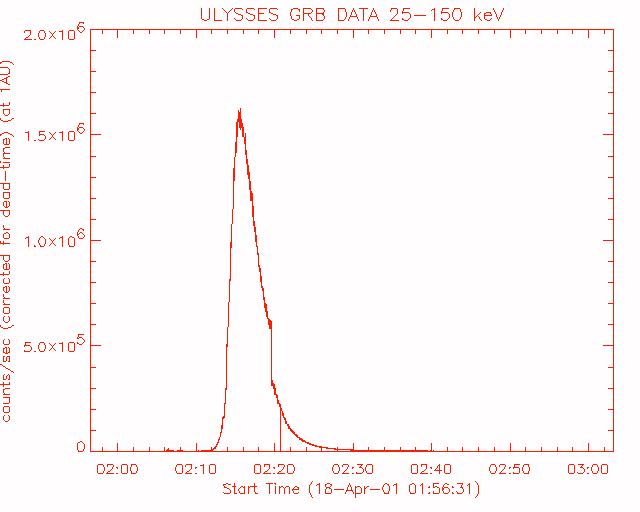
Figure 1 shows the ULYSSES/GRB dead-time corrected counts for the flare of 18-apr-2001. The energy range of the detector is approximately 25 to 150 keV. This is a very large flare; Figure 2 shows flux-corrected counts, i.e., the counts as would have been observed at 1AU. The peak in flux-corrected counts is 1.6e6, which puts it in the range of the Giant flares of June, 1991 studied by Kane, etal., Apj 446L, 47, 1995. The range in flux-corrected count rates for those flares was 4e5 to 1e7; this flare is approximately 1/6 the size of the largest one, the 1-june-1991 flare. Spectral data for this flare is probably affected too much by pulse pileup and saturation to get a reasonable spectrum, as for the June 1991 flares, but we can estimate that the peak energy flux in electrons for this flare would be 1/6 times the peak energy flux for the 1-jun-1991 flare. If we use the same assumed spectrum, a power law spectrum with an index of 3.5, then the peak energy flux for this flare in electrons greater than 20 keV is this 1.1e31 ergs/sec, and the peak flux in electrons above 20 keV is 2.5e38 electrons/sec.
Figure 1: Dead Time Corrected Ulysses Countrate

Figure 2: Flux Corrected Ulysses Countrate
